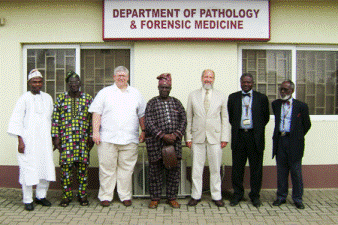Natural Resources, School of

Karl Reinhard Publications
Document Type
Article
Date of this Version
2008
Citation
Published (as Chapter 10) in Case Studies in Environmental Archeology, Second Edition, ed. Elizabeth J. Reitz, C. Margaret Scarry, & Sylvia J. Scudder (Springer, 2008), pp. 191–209.
Abstract
Pathoecology is the study of the biotic, abiotic, and cultural environments of disease (Martinson et al. 2003). A parasitic infection is the result of the pathoecological interaction of host behavior, parasite life cycle, the environment in which both life forms live, the nutritional status of the host, and host physiological responses to all of these factors. Parasites contribute to anemia in many ways. Some, such as hookworm, actually consume blood and cause iron loss through their activities. For other parasites, symptoms such as profuse diarrhea reduce intestinal absorption of nutrients. Others, such as certain fish tapeworms, actually compete for absorption of nutrients necessary for blood cell production. Often these causes of anemia are interdependent. Human behavior is one of the keys to understanding pathoecology (Martinson et al. 2003; Reinhard 1988, 1992a; Reinhard and Buikstra 2003; Reinhard et al. 2003). Thus, for the pathoecologist studying human health, one goal is to identify the human behaviors related to environmental conditions that promote or reduce disease. Relevant aspects of behavior include population density, seasonal movement, excreta disposal patterns, diet, and personal hygiene (Reinhard 1992b). To examine the complexity of pathoecology among the Ancestral Pueblo culture of the Colorado Plateau, I compared two Ancestral Pueblo villages: Salmon Pueblo, New Mexico, (formerly known as Salmon Ruin) and Antelope House, Arizona (Figure 1). Parasitism and nutritional deficiency are both causes of anemia. Previous work (Reinhard 1992b) showed that these sites represented the extremes in anemia. Through this comparison, one begins to understand the pathoecology of ancient anemia.
Included in
Archaeological Anthropology Commons, Ecology and Evolutionary Biology Commons, Environmental Public Health Commons, Other Public Health Commons, Parasitology Commons


Comments
Copyright © 2008 Springer Science + Buisiness Media, LLC. Used by permission.